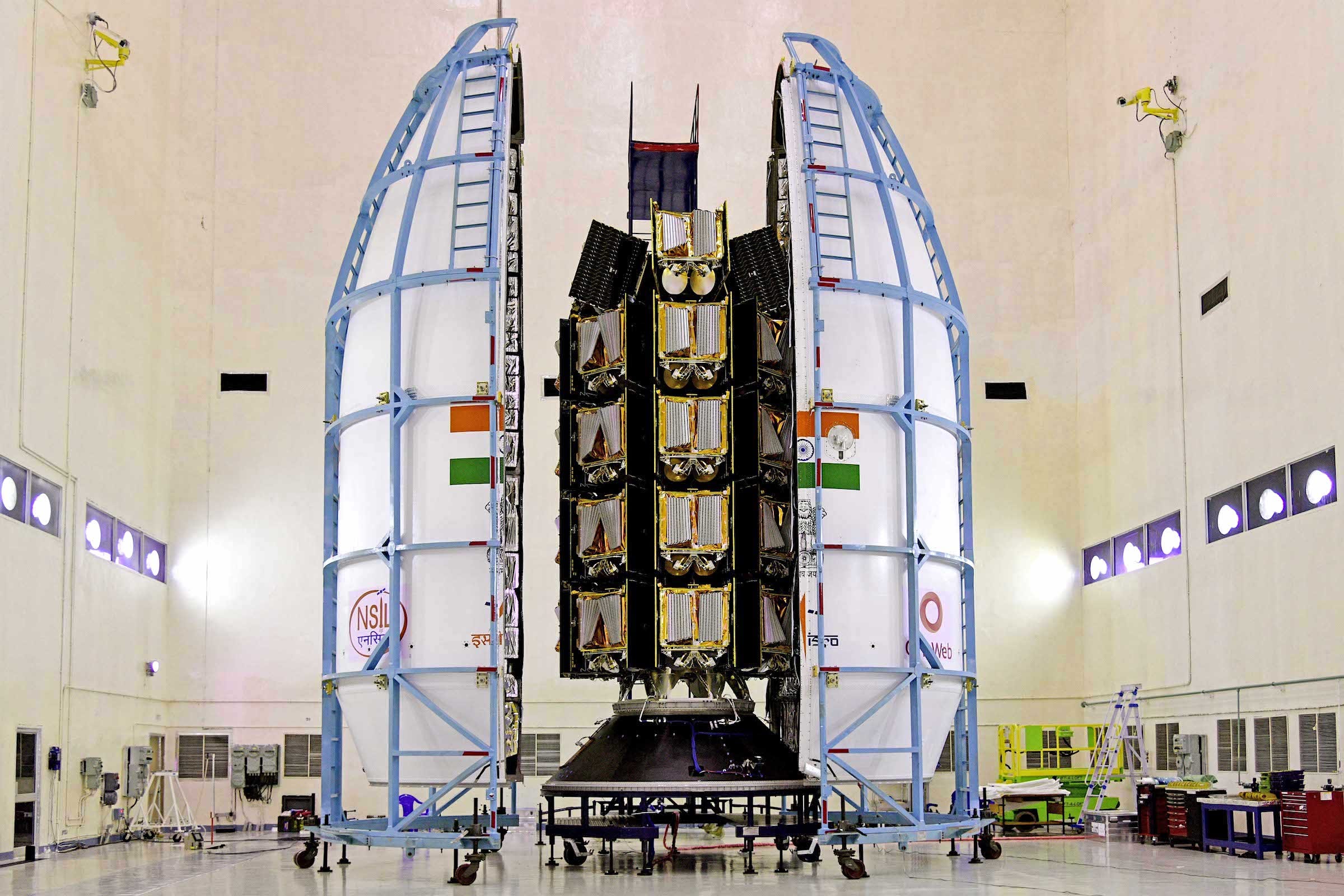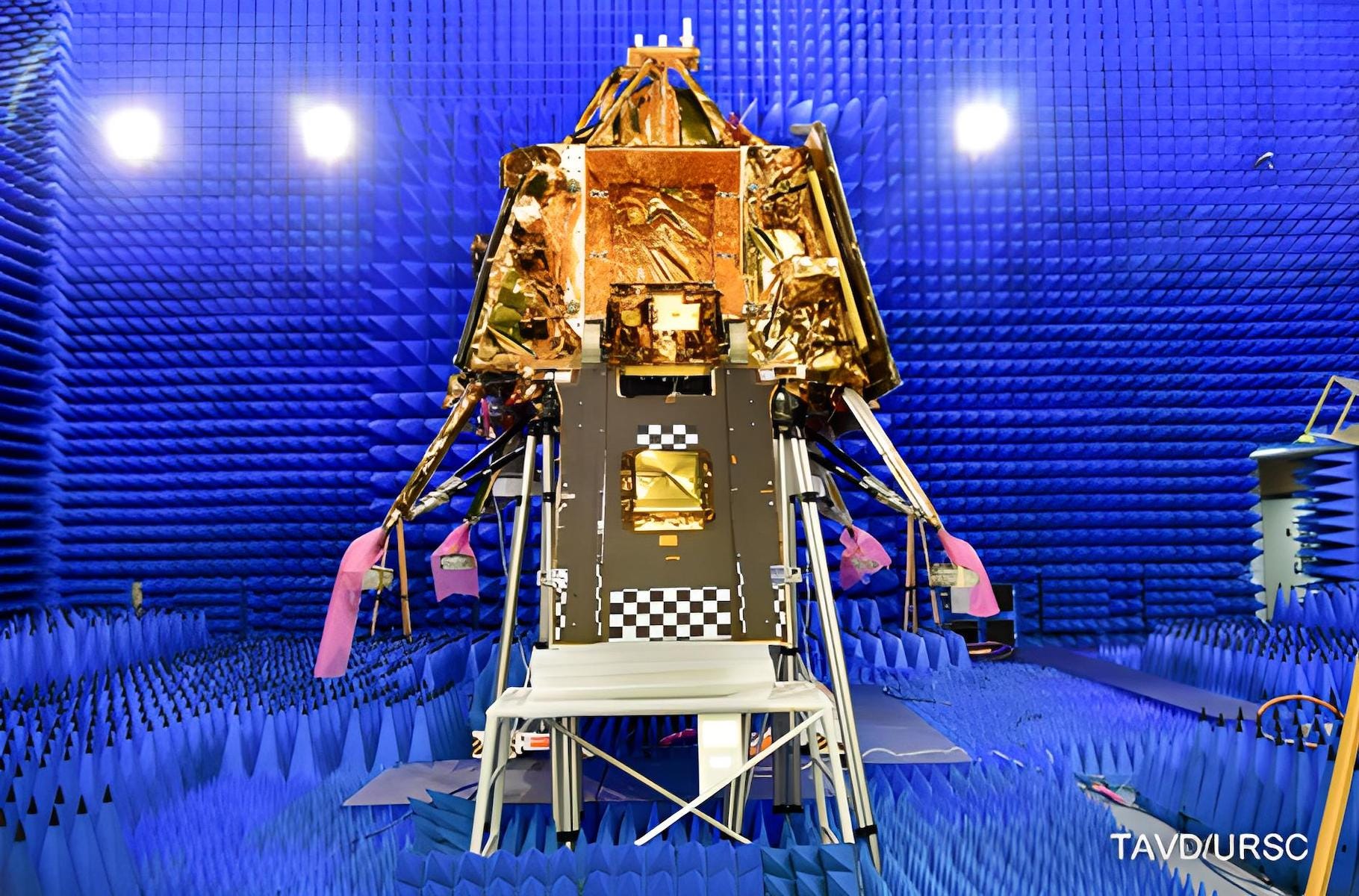Indian Space Progress #2: Success with SSLV, Chandrayaan 3 details, a new partnership with NASA, and more
Thank you so much everyone for your immense interest in my Indian space newsletter, which is now more than 3,500 readers strong! After sitting on the idea for 2 years now, I’m glad to have finally found the inclination, time, and (financial) means to craft such reports. And it’s to that latter end that I’m excited to welcome SkyServe as the newsletter’s second sponsor! 🚀
SkyServe is an in-space edge computing company which enables geospatial analytics businesses to host their proprietary algorithms and AI models on Earth Observation satellites, the latter spanning optical, SAR and RF sensors.
Personally, I like that their EarthSIGHTS interactive site provides free theme-based insights from satellite data. Both Adithya and Vishesh have been long-time supporters of my work, and I’m happy to have their company onboard as an Indian Space Progress sponsor. :)
Electron, meet SSLV

On February 10, ISRO successfully placed a 154-kilogram Earth observation satellite and 2 smallsats into their intended 450-kilometer circular orbits with the second developmental flight of the homegrown SSLV rocket. The successful launch comes shortly after the failure of SSLV’s debut flight last August. After another demonstration launch end of year, India intends to start commercially flying the SSLV for payloads up to 500 kilograms, putting it squarely against Rocket Lab’s Electron as well as new entrants like Firefly Alpha in terms of its mass class.
It seems easy to brush off the SSLV as just another small satellite launcher, or a smaller PSLV, but take a moment to consider its salient features. The SSLV’s planned sticker price of less than $4 million per launch heavily undercuts Electron’s average of $7 million. And the rocket’s highly modular and solid-fuel design allows it to be fully assembled in no more than 4 days, compared to the 16 days needed for the liquid-fueled Electron and 60 for India’s own workhorse PSLV. Much of this efficiency boils down to ISRO heavily leveraging existing technologies, tooling, supply chains, and programmatic knowhow of its PSLV and GSLV rockets.
Even if we were to assume considerable margins above these numbers for when the SSLV actually becomes operational, and throw in Electron booster recoveries, there’s still room left to outcompete, especially when coupled with India’s established commercial network from years of PSLV flights, which itself is now joined by the GSLV Mk III’s launching of OneWeb satellites. Of course, SpaceX’s Falcon 9 transporter flights could simply eat everyone’s lunch anyway, despite its recent price hike, but the Falcon 9’s exceptionally high demand means the 2-year average wait time to fly cheap will certainly not work for enough customers, thereby leaving room for other launchers.
In any case, Electron is not the launch vehicle that should worry the most about SSLV’s existence. That burden falls on India’s own aspiring private launch companies such as Skyroot and Agnikul, who don’t have the systemic advantages that ISRO does. They might find themselves strapped for customers in an already cut-throat market.
Upcoming launches by ISRO
It’s through New Space India Limited (NSIL), a relatively new Bengaluru-based Department of Space (DOS) company tasked with undertaking commercial activities for India, that ISRO won two contracts to launch OneWeb satellites from India. ISRO lofted the first such batch of 36 satellites to the desired 600-kilometer circular low Earth orbit on October 23 last year. Preparations are ongoing for the next 36, which have been integrated onto the dispenser of their GSLV Mk III rocket ahead of a mid-March launch.
Relatedly, Chethan Kumar reports that NSIL will get another office, in a special financial zone near Ahmedabad, to leverage the presence of nearby ISRO-affiliated organizations and financial institutions so as to spur a commercial space ecosystem.

Harsh Vardhan reports that ISRO has delayed the launch of its versatile Aditya-L1 solar observatory yet again, this time from Q2 to end of year. Adding to the frustration is the conveyance of said information in the unfortunately characteristic style of India’s premier space agency: no formal announcement and no explanation on any official channel. My guess for the latest delay is that the instruments aren’t ready. ISRO received Aditya-L1’s coronagraph only in January, with the rest of the 6 instruments yet to be received. Well, we did get something formal instead: a somewhat pretty mission handbook.
More Chandrayaan 3 details emerge, lander testing and landing site in sight
ISRO, unannounced, finally updated its official webpage on the Chandrayaan 3 Moon landing mission with new details, including a host of lander specifications such as the onboard sensors, the engine configuration, and the targeted touchdown velocity. The page’s mention of the landing site is particularly interesting. Launching later this year, the Chandrayaan 3 lander will attempt a lunar touchdown at the near-polar location of 69.37 S, 32.35 E (click the link to browse on an interactive map). That’s roughly just 100 kilometers east of the Chandrayaan 2 landing site (70.83 S, 22.67 E) lying in the same larger rocky highland region, which makes sense given the identical goals of the landing part of the two missions.

Like with other lunar highlands, the Chandrayaan 3 landing region might contain some material from the ancient lunar crust as well as materials ejected when nearby craters formed during the period of heavy bombardment by asteroids and comets roughly 3.8 to 4.1 billion years ago. Both these types of materials are great targets for the two spectrometers onboard Chandrayaan 3’s rover, which will explore the landed region for one lunar day i.e. 14 Earth days.
In the meanwhile, lander and rocket tests are ongoing. The Chandrayaan 3 lander is undergoing the standard series of space-simulating tests to ensure its nominal functioning during all mission phases. On February 2, the lander successfully passed electromagnetic interference testing, which checked in the foamy, pointy interiors of a Faraday cage chamber if the lander’s electrical and radio emissions affect any of its four key hardware mission elements. On February 24, ISRO completed flight acceptance testing of the third stage cryogenic engine part of Chandrayaan 3’s ride to space—the GSLV Mk III rocket.

Many thanks to the Takshashila Institution and SkyServe for sponsoring this month’s Indian Space Progress report.
Steady towards human spaceflight
As ISRO works towards the ambitious inaugural Gaganyaan mission that will make India only the world’s fourth country to indigenously send humans to space, it plans to conduct two milestone abort tests this year, one by May and the other by August. For the first such test, called TV-D1, ISRO says they’ve qualified the Crew Module’s structure as of January, and successfully tested the mission’s deceleration system. On February 24, ISRO received from its contractor one such unpressurized crew module to be used for such abort tests.
Starting with a test on February 7, ISRO also commenced a series of sea recovery trials of a representative crew module, which simulates the mass, center of gravity, outer dimensions, and externals of the actual Gaganyaan Crew Module. In parallel, ISRO is in talks with the Australian Space Agency to establish a ground station in the country to support Gaganyaan missions.

India and the U.S. seek to strengthen space technology partnership
As part of a new U.S.-India partnership in some “critical and emerging technologies”, the two nations announced on January 31 several notable upcoming collaborative areas in the space sector:
- Strengthening cooperation on human spaceflight, which includes NASA’s Johnson Space Center providing advanced training for ISRO Gaganyaan astronauts. This is great as it simultaneously provides ISRO with redundancy in its similar deal with the Russian space agency.
- Expanding STEM talent exchanges to include space sciences, Earth sciences, and human spaceflight
- Identifying possible contributions from ISRO and Indian aerospace companies to NASA’s CLPS program, which aims to regularly, commercially send payloads, instruments, and hardware to the Moon on privately built U.S. landers.
That last bit is an unexpectedly nice trajectory, but I was more surprised by the lacking mention of India’s Chandrayaan 2 lunar orbiter, which already exists in a highly desired polar lunar orbit as a remote-sensing reconnaissance machine. It was only further confounding then that when last week U.S. scientists formally urged NASA to replace the gracefully aging, 2009-launched Lunar Reconnaissance Orbiter to support the slew of upcoming robotic & crewed Artemis Moon missions, their report recognized the abilities of India’s Chandrayaan 2 orbiter. To that end, I’ve argued how a NASA-ISRO collaboration for Artemis with said orbiter represents an untapped opportunity. Coupled with involvement in CLPS, such a move can positively affect India’s undecided stance on the U.S. led Artemis Accords, which aims for globally cooperative lunar exploration.
Related reads:
- Pranav Satyanath, in his opinion piece for The Hindu, says that if India and the U.S. wish to sustain long-term civil space cooperation, they should collaborate on programs rather than just specialized projects like NISAR.
- How NASA and India collaborated on Chandrayaan 1, and co-discovered water on our Moon 🧊

More Indian Space
ISRO is adapting its workhorse liquid-fueled Vikas engine to gain the ability to throttle, which would enable India to make reusable launch vehicles. On January 30, ISRO conducted tests to successfully throttle a Vikas engine to 67% and 45% thrust levels respectively. This is significant because Vikas engine variants power a whole range of India’s operational rockets, from the core stage of the GSLV Mk III—which is also being human-rated for Gaganyaan—to the PSLV’s second stage as well as the second stage and liquid strap-on boosters of the GSLV Mk II. Related fun fact for non-Hindi readers: Vikas means progress.
Sandhya Ramesh has a very nice article on how Bengaluru-based SatSure has built a business based on (primarily) ESA and NASA public Earth observation data to uniquely solve agricultural and infrastructure problems in the country.
The 4th Indian Planetary Science Conference will take place at the Physical Research Laboratory, Ahmedabad from March 22–24. I’m happy to share that my abstract titled “Advancing the public reach of India’s planetary science and space exploration activities” has been selected for a poster presentation:
